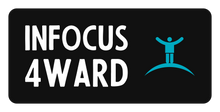How might we respond to the need to deliver higher volume while sustaining productivity and happiness?
by Shauna Richter
KEY TAKEAWAY
| There is a temptation to match increases in volume with elevations in speed of delivery. It may seem counterintuitive to add intentional points of pause in times when we are driven to move faster. Adding this type of rigor to evaluate new work against organizational priorities and consider the needs of each work flow stage, can mitigate risks and sustain or even elevate productivity and team happiness. |
Whether it’s a temporary or prolonged spike in work volume, how do we navigate volume increases without negatively impacting productivity and happiness in the workplace? Rather than diving into the root causes, in this article, let’s accept that pressures on the business demand that we do more work with fewer resources. This circumstance will likely stretch the workforce and business processes. What options are available to protect productivity and team happiness, especially if this volume is the “new normal”?
Each organization has their own flow of work. For this discussion, the stages in the diagram below are organized to apply to the movement of short tasks through to multiyear projects.

Overall, a sustained increase in volume of work can create a feeling across the team of being overloaded and chronically behind. Volume, particularly when there are multiple points of entry, creates pressure to deliver at a more rapid pace, which can lead to a rise in attrition and increased medical claims. From a productivity perspective, volume can create confusion about what to focus attention on first, risking delays and a “first in, first out”, approach, rather than focusing effort on delivering the highest value items/initiatives first.
OPPORTUNITIES TO MITIGATE RISKS TO PRODUCTIVITY & HAPPINESS
Let’s examine some opportunities to mitigate risk at each workflow stage through the lens of productivity and team happiness.
Work Initiation/Ideation
There is a fire that propels the ideation/work initiation stage. It’s helpful to put a break between this and the execution team to look at each item or initiative against priorities. This allows the execution team to stay focused on delivering work in the pipeline and not feel overwhelmed with what might be coming their way. It also allows those in the ideation/work initiation stage to continue, uninhibited. While we might not execute on all that is produced here, it is vital to protect the spark that fuels the fire behind this stage to continue generating new work for the organization.
Work Intake & Planning
This stage creates a pause before execution. The opportunity here lies in establishing a decision-making formula that can guide the team to independently evaluate new items, reserving senior leadership involvement for complex decision-making. By evaluating each new item by the same criteria, this approach can neutralize “positional influence” where the priority or urgency of an idea is enhanced by its association with a senior leader.
To enhance the effectiveness of this stage, establishing a cadence and balanced representation across the organization sets expectations for those in the stage before (ideation/new work) and the next (execution & monitoring). For those involved in the work intake & planning stage, adding structure and time expectations to the process can serve to drive decision-making, prevent bloating the process with too many people, or falling into a spiral of analysis. Another opportunity is to determine size restrictions for projects. Whether sized by budget, delivery time, or other factors, once the maximum is reached, the project must be split into smaller pieces, which can be more easily and reliably prioritized, planned, and forecasted.
Work Execution & Monitoring
An increase in volume can make team collaboration and communication more complex and stressful for the execution team. This can be mitigated when the specifics of the inputs to execution are specified in the previous work intake & planning stage. Establishing and monitoring key performance indicators (KPIs) to measure progress and quality can indicate dips in productivity. In addition, if it is known that volume has increased significantly, taking a regular pulse of team engagement using anonymous surveys and 1:1 conversations can mitigate the risk of increasing attrition.
Work Closure & Continuous Improvement
When volumes increase, there may be pressure to skip this stage to address new work flowing in. When this happens, quality, customer satisfaction and employee morale can suffer. Automation of any manual testing and feedback processes can save time so that the team can focus on responding to the data collected, correcting errors, and enhancing the overall workflow process overtime.
